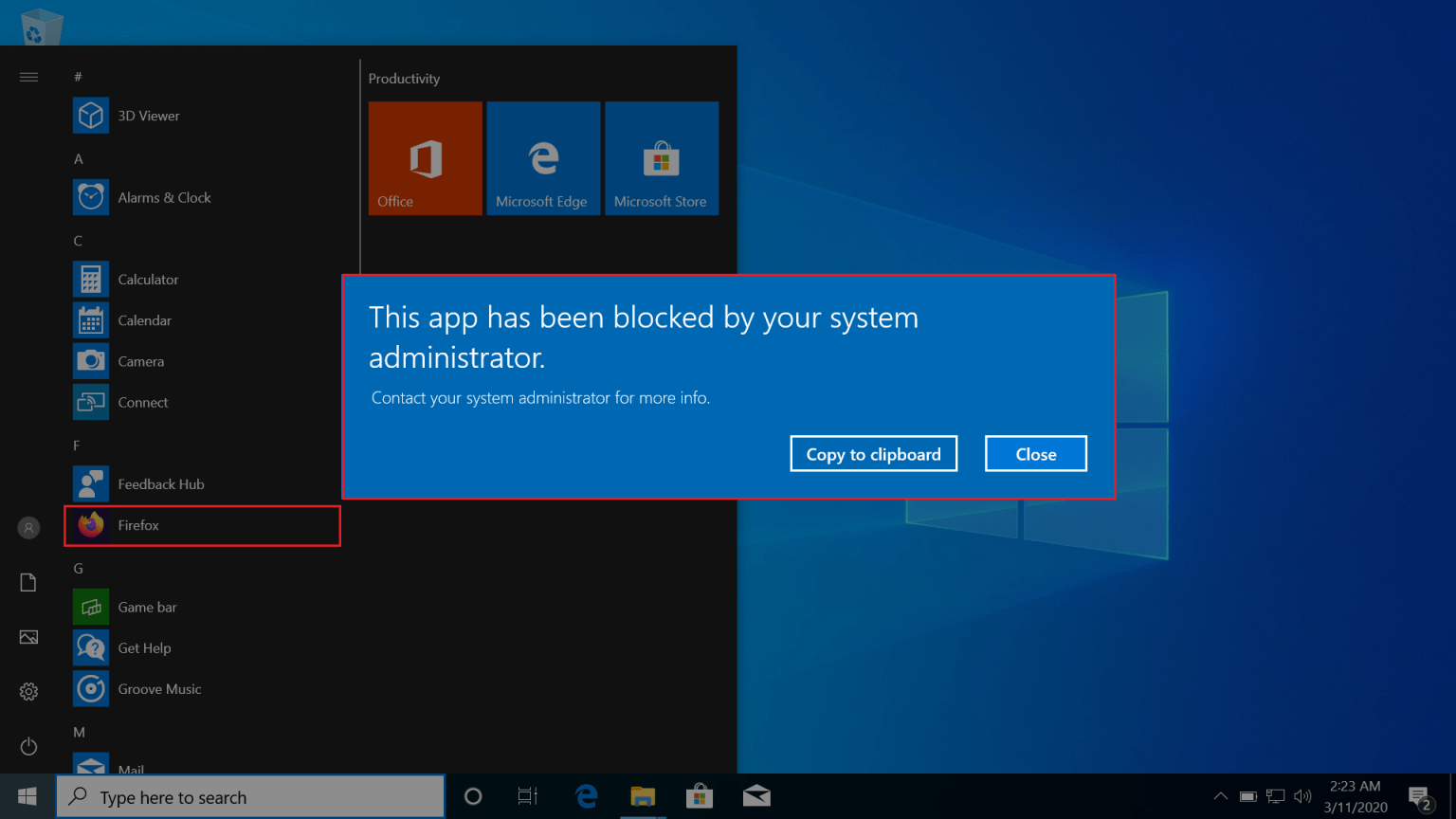

PowerShell host is running in constrained language mode (it’s evaluated when the process is started).Ma圎vents 100 | Where Message -match "TEST.PS1" | Test-AppLockerPolicy -Path C:\Windows\test.ps1 -User Everyone Test-AppLockerPolicy -Path C:\test.ps1 -User Everyone Out-File C:\Windows\test.ps1 -Encoding asciiĬopy-Item -Path C:\Windows\test.ps1 -Destination C:\ # Create a PowerShell script file in allowed location ps1 file that contains nothing malicious and copy it in a location where it’s allowed to run and in another location where it’s not. We have seen so far that the events written to the eventlog, whether the file is really executed or not and the PolicyDecision(s) reported by the Test-AppLockerPolicy cmdlet are fully aligned and coherent with the official documentation.
MICROSOFT APPLOCKER WINDOWS
The file %WINDIR%\TEST.BAT was allowed to run because the rule named “(Default Rule) All scripts located in the Windows folder” allows it explicitly. A DeniedbyDefault RUN decision from Applocker has a RuleId set to. The file %OSDRIVE%\TEST.BAT isn’t allowed to run because there’s no rule that would allow it to be executed. Let’s have a quick look at what appears in the eventlog. For more information, contact your system administrator.” message instead and a related 8007 event is generated. bat file isn’t executed, I get a “ This program is blocked by group policy. bat file in a location that is not explicitly mentioned in the rules is denied from running by default. We can see that the above documentation strictly applies. Ma圎vents 100 | Where Message -match "TEST.BAT" | Get-WinEvent "Microsoft-Windows-AppLocker/MSI and Script" ` Test-AppLockerPolicy -Path C:\Windows\test.bat -User Everyone Test-AppLockerPolicy -Path C:\test.bat -User Everyone # How Applocker would evaluate its RUN decisions # Copy the same file in a denied locationĬopy-Item -Path C:\Windows\test.bat -Destination C:\ $Įcho Hello | Out-File C:\windows\test.bat -Encoding ascii Let’s assess now how the above documentation applies! bat file that contains nothing malicious and copy it in a location where it’s allowed to run and in another location where it’s not.
MICROSOFT APPLOCKER CODE
To control interpreted code by using AppLocker, the host process must call AppLocker before it runs the interpreted code, and then enforce the decision returned by AppLocker. For example, Windows batch files (*.bat) run within the context of the Windows Command Host (cmd.exe).

Interpreted code is a form of executable code that runs within a host process. It does not control all interpreted code that runs within a host process, for example, Perl scripts and macros. cmd files, and Windows PowerShell scripts. In each case, the actions taken by AppLocker are written to the event log.ĪppLocker can only control VBScript, JScript.

The script file then is evaluated against the AppLocker policy to verify that it is allowed to run. AppLocker invokes the Application Identity component in user-mode with the file name or file handle to calculate the file properties. ps1 files the script host is PowerShell) invokes AppLocker to verify the script. (that’s not a requirement to read this post 🙂 )Īnyway, please keep in mind the following that appears in the official online documentation:īefore a script file is run, the script host (for example. Let’s suppose you’re familiar with Applocker. Goal: Make sure to understand how Applocker and PowerShell work together.


 0 kommentar(er)
0 kommentar(er)
